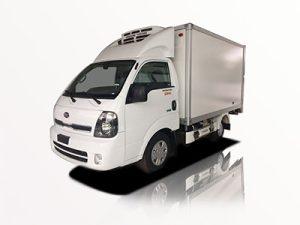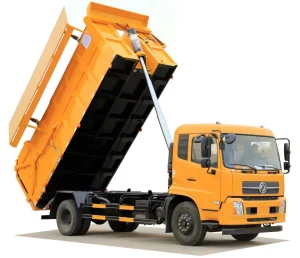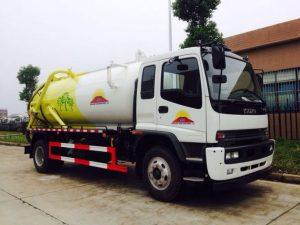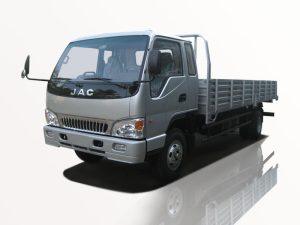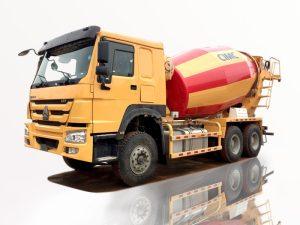Monday to Saturday - 8:00 -17:30
Essential Guide to Waste Compactor Parts: Everything You Need to Know
Waste compactors are crucial in waste management systems, helping businesses and municipalities efficiently process and reduce waste. Understanding the parts that make up these machines, how they work, and how to maintain them can prolong their lifespan and improve their functionality. In this article, we will explore the various waste compactor parts, their functions, maintenance tips, and much more.
Understanding Waste Compactors
What is a Waste Compactor?
A waste compactor is a machine designed to reduce the volume of waste materials through compressing them into compact cubes, bales, or logs. Commonly used in commercial settings such as restaurants, factories, and shopping centers, compactors can significantly reduce the frequency of waste collection and lower disposal costs.
How Waste Compactors Work
Waste compactors typically consist of a loading area, a compaction chamber, and a hydraulic system. Waste materials are loaded into the machine, where the hydraulic system compresses them, reducing their volume. The compacted waste is then ejected for storage or transportation.
Main Parts of a Waste Compactor
1. Hydraulic System
The hydraulic system is the heart of a waste compactor. It provides the necessary pressure for compaction. Components include:
- Hydraulic Pump: Converts mechanical energy into hydraulic energy, pushing fluid through the system.
- Hydraulic Cylinder: Applies pressure on the waste to compress it. The cylinder is crucial for achieving maximum compaction.
- Hydraulic Hoses: Carry fluid between the pump and cylinder, facilitating the entire compaction process.
2. Compaction Chamber
The compaction chamber is where the waste is compressed. Its design influences the efficiency of the compaction. Key features to consider include:
- Material: Often made of heavy-duty steel to withstand high pressure.
- Size: Should be large enough to accommodate the volumes of waste generated.
3. Control System
The control system manages the operation of the waste compactor. Its components include:
- Control Panel: Provides operators with controls to start, stop, and monitor compactor operation.
- Sensors: Detect issues like overload or malfunction to prevent damage.
4. Loading Door
The loading door allows users to place waste inside the compactor. It should be easy to operate and seal properly to ensure efficient compaction:
- Mechanism: Can be hydraulic or manual, depending on the model.
- Sealing: Prevents odors and pests from escaping.
5. Ejection System
The ejection system removes the compacted waste from the machine. Common types include:
- Push Plate: Used in many compactors to push the waste out once it is ready for transport.
- Conveyor System: Some advanced compactors feature a conveyor that moves the compacted waste to a designated area.
6. Safety Features
Safety features are critical for the operation of waste compactors. Important components include:
- Emergency Stop Switch: Allows operators to stop the machine instantly in case of an emergency.
- Safety Guards: Prevent unauthorized access to critical areas of the machine during operation.
Maintenance of Waste Compactor Parts
Importance of Regular Maintenance
Regular maintenance is essential to ensuring the longevity and efficiency of waste compactors. Neglecting maintenance can lead to costly repairs, downtime, and safety hazards.
Maintenance Tips
1. Inspect Hydraulic Components
Regularly check hydraulic hoses and connections for leaks. Replace any damaged hoses immediately to prevent hydraulic fluid loss.
2. Clean the Compactor
Ensure that the compaction chamber and loading area are clear of debris. Regular cleaning helps improve efficiency and prevent odors.
3. Test Safety Features
Periodically test the emergency stop switch and safety guards to ensure they function correctly. This provides peace of mind during operation.
4. Lubricate Moving Parts
Applying lubricant to moving parts helps reduce friction and wear. Refer to the manufacturer’s guidelines on which lubricants to use.
Upgrading and Replacing Waste Compactor Parts
When to Upgrade Components
Upgrading certain parts of your waste compactor can enhance performance. Consider upgrades if you notice:
- Decreased compaction efficiency.
- Frequent breakdowns or repairs.
- Increased operating costs.
Common Parts for Replacement
1. Hydraulic Cylinders
Over time, hydraulic cylinders may wear out. Observe for leaks or decreased pressure as signs of needing a replacement.
2. Control Panel
If the control panel becomes unresponsive or malfunctioning, replacing it can restore functionality. Ensure compatibility with your compactor model when sourcing replacements.
3. Seals and Gaskets
Worn seals can lead to hydraulic fluid leaks. Regularly check and replace seals based on usage frequency.
Practical Examples of Waste Compactor Parts in Use
Case Study: Restaurant Waste Management
A local restaurant implemented a waste compactor to manage their waste effectively. Here’s how its parts contributed:
- Hydraulic System: The hydraulic pump provided power to compress large volumes of food waste quickly, allowing for easy disposal.
- Compaction Chamber: The restaurant’s compactor had a robust chamber capable of withstanding the unique challenges of food waste.
Case Study: Retail Store Application
A retail store used a waste compactor to handle packaging materials. The case highlights:
- Control System: The intuitive control panel allowed staff to operate the machine without specialized training.
- Ejection System: The conveyor system enabled efficient removal of compacted bales for recycling.
Choosing the Right Waste Compactor Parts
Factors to Consider
When selecting parts for a waste compactor, keep the following factors in mind:
- Compatibility: Ensure all replacement parts match the original specifications of your compactor.
- Quality: Prioritize durable materials to avoid frequent replacements and maintain operational efficacy.
- Supplier Reputation: Source components from reputable suppliers to guarantee reliability and performance.
Frequently Asked Questions (FAQ)
1. What are common issues with waste compactor parts?
Common issues can include hydraulic leaks, worn-out seals, malfunctioning controls, and obstructed ejection systems. Regular maintenance can help mitigate these problems.
2. How often should I maintain my waste compactor?
It is advisable to perform routine maintenance checks at least once a month and comprehensive inspections every six months to ensure all parts are in optimal condition.
3. Can I replace compactor parts myself?
While some simple replacements can be done by a knowledgeable operator, it is best to consult a professional for complex repairs to ensure safety and effectiveness.
4. How do I know when to replace my waste compactor?
If you experience frequent breakdowns, increased maintenance costs, or if the compactor no longer meets your waste management needs, it may be time to consider a replacement.
5. Are there specialized waste compactor parts available for specific industries?
Yes, many manufacturers offer specialized parts designed for specific industries, such as food service or construction, to better handle the unique waste generated in these sectors.
6. What is the average lifespan of a waste compactor?
The lifespan of a waste compactor can vary widely depending on usage, maintenance, and the quality of the machine, but generally, they can last from 10 to 15 years with proper care.



